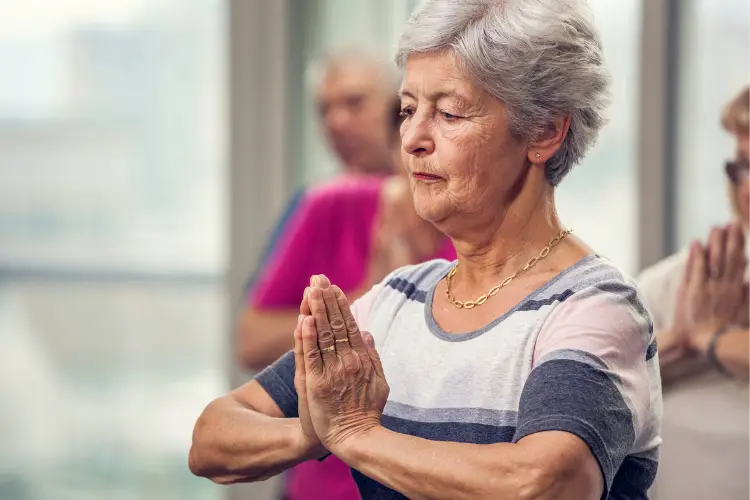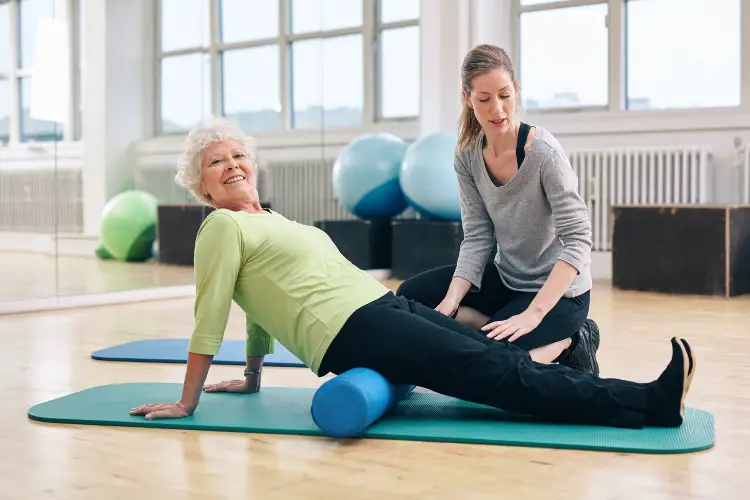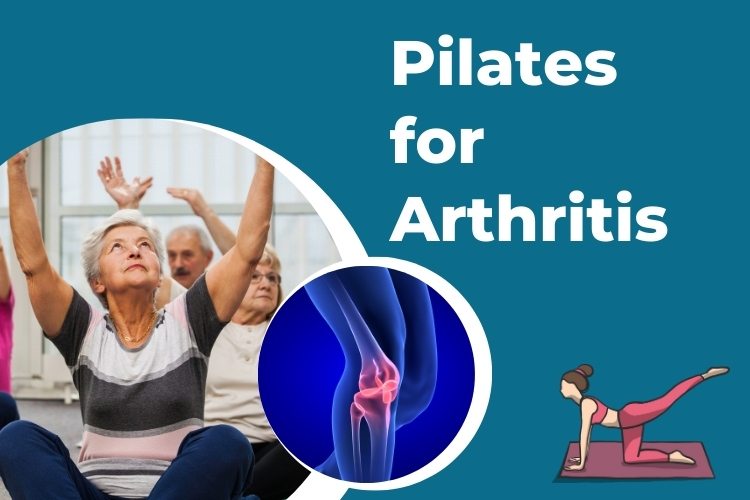Arthritis pain can make even the simplest tasks feel impossible.
But fear not, dear reader, for we have discovered a miraculous solution to this affliction: Pilates for Arthritis! Yes, you read that right.
The low-impact exercise that emphasizes core stability, spinal flexibility, and maintaining joint mobility can help relieve arthritis pain and improve your quality of life.
One in four people in the US suffers from arthritis, causing pain and restricted movement. However, physical activity can decrease pain and improve mobility. And that’s where Pilates comes in.
Not only is it a great option for those with arthritis, but it’s also a fantastic way to stay active and healthy. So, if you’re looking for a way to relieve arthritis pain and improve your overall well-being, look no further than Pilates.
What are the Benefits of Pilates (for Arthritis)?
We can benefit from Pilates for arthritis as it emphasizes core stability, spinal flexibility, and maintaining or improving range of motion of the joints. This makes it an ideal low-impact exercise recommended for adults with arthritis.
Pilates can be performed using a Mat or on specially designed equipment, without impact, which is perfect for people with arthritis who need to avoid high-impact exercises that can cause pain and discomfort.
To improving flexibility and range of motion, Pilates can also help to strengthen muscles, improve posture, and increase overall body awareness. These benefits can help to reduce the risk of falls and improve our ability to perform daily activities, such as walking, standing, and lifting.
Pilates modifications can be made for people with arthritis, such as avoiding deep flexing of the knee or choosing another position to stretch the lower back. This makes it a customizable exercise option that can be tailored to our individual needs and abilities.

How to Modify Pilates Exercises for Arthritis?
As someone with arthritis, I’ve learned that modifying Pilates exercises to avoid deep flexing of the knee is like taking a detour on a road trip – it may take a little longer to get to your destination, but the scenic route is worth it for the beautiful views and reduced discomfort along the way.
Pilates may seem daunting, but with the right modifications, it can be a game-changer for managing arthritis pain. It’s important to listen to your body and work with a qualified teacher who can help modify the exercises to suit your needs.
Some modifications that I’ve found helpful include avoiding deep knee flexion by choosing positions that don’t put too much strain on the knees, such as lying down or sitting.
I’ve also been advised to avoid certain exercises that put too much pressure on the joints, such as planks or push-ups. Instead, I focus on exercises that work on maintaining range of motion for the joints, stretching, breathing, and getting the heart rate up.
With these modifications, I’ve seen a significant improvement in my flexibility, strength, and overall quality of life.
Pilates for Arthritis: Precautions and Helpful Tips
When starting a new exercise program, it’s important to consult with a doctor and warm up properly to prevent injury. This is especially true for people with arthritis, as they may have specific needs and limitations.
It’s important to find a qualified Pilates instructor with experience working with people with arthritis to ensure that modifications are made as needed.
When doing Pilates for arthritis, it’s important to listen to your body and not push beyond your limits. Discomfort initially is normal, but if it persists or worsens, it’s important to reconsider the workout and talk to a doctor about finding a better form of exercise.
It’s also important to stay hydrated, take breaks when needed, and avoid overexertion. With these precautions and tips in mind, Pilates can be a safe and effective way to relieve arthritis pain and improve overall quality of life.

Frequently Asked Questions about Pilates for Arthritis
Can Pilates cure arthritis?
No, pilates cannot cure arthritis, but it can greatly improve quality of life for those suffering from the condition. With low-impact exercises that work on joint mobility and core stability, pilates can help reduce pain and increase overall physical function.
Is it necessary to use specialized equipment for Pilates if I have arthritis?
No, it’s not necessary to use specialized equipment for Pilates if you have arthritis. Low-impact exercises that focus on joint range of motion, core stability, and spinal flexibility can be done on a mat. Always check with a doctor before starting any exercise program.
How long will it take for me to see results from Pilates for arthritis?
We can expect to see results from Pilates for arthritis within a few weeks of consistent practice. However, the benefits may vary based on the severity of arthritis and individual factors. It’s important to consult a doctor and a qualified Pilates instructor for personalized guidance.
Conclusion
Pilates can be a game-changer for those suffering from arthritis. With its low-impact exercises that focus on joint mobility, core stability, and spinal flexibility, Pilates can help reduce pain and improve overall physical function.
By making modifications to avoid deep knee flexion and choosing exercises that work on maintaining range of motion for the joints, Pilates can be customized to suit individual needs and abilities. It’s important to consult with a doctor and find a qualified Pilates instructor to ensure safety and effectiveness.
With consistent practice, we can expect to see results within a few weeks and enjoy a better quality of life.


